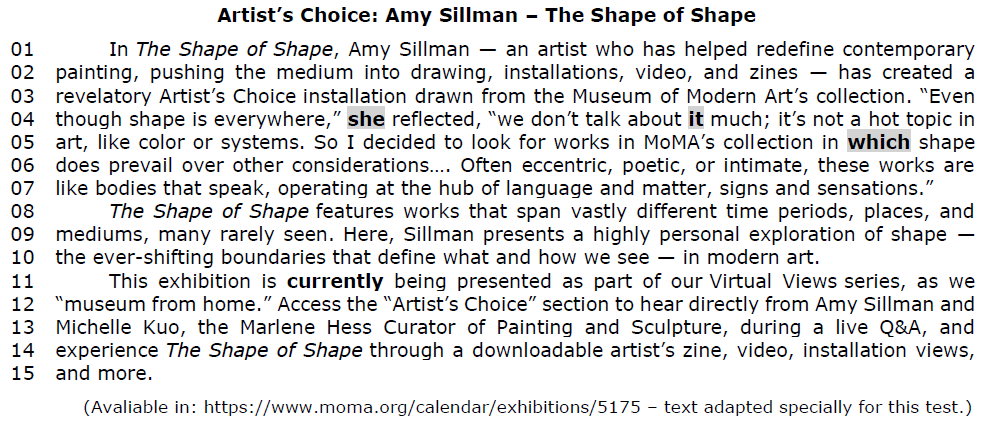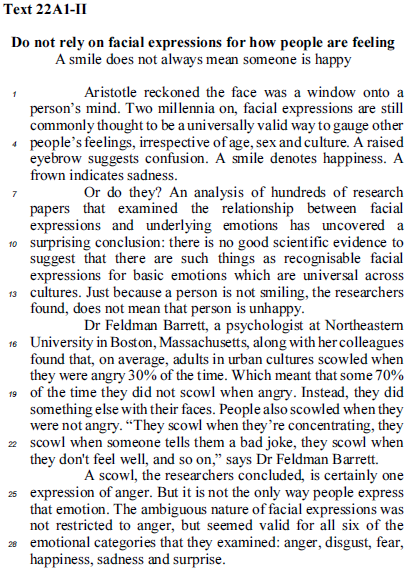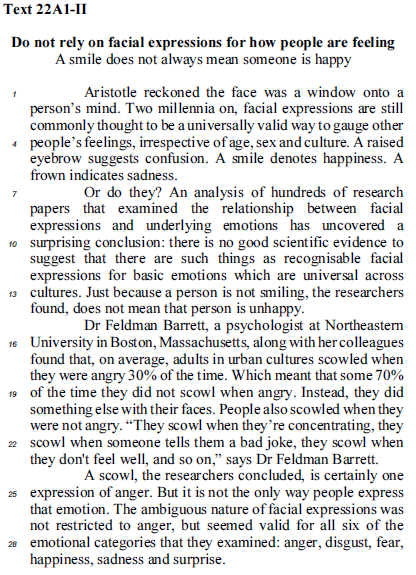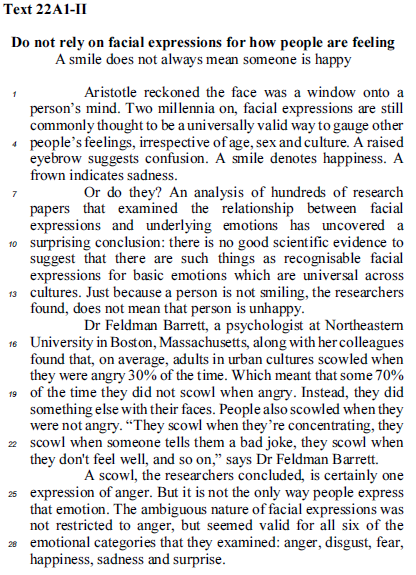Questões sobre Interpretação de texto
Lista completa de Questões sobre Interpretação de texto para resolução totalmente grátis. Selecione os assuntos no filtro de questões e comece a resolver exercícios.

-
A) A collection of her own pieces of art
B) A selection of MoMAs pieces that explore shape.
C) An exhibition of items with unique colors, systems, or shapes.
D) A virtual exhibition of eccentric, poetic, or intimate sculptures
-
A) farewell
B) something is done by someone
C) not later than the time mentioned
D) after
E) the degree or amount of something
i. How much harm was caused to nature? ii. How many habitats were lost? iii. How much forests were included?
-
A) All sentences are correct.
B) All sentences are incorrect.
C) Sentences (i) and (iii) are correct.
D) Sentences (i) and (ii) are incorrect.
E) Only sentence (iii) is incorrect.
Read carefully the following fragment, then answer the question
Ebony and ivory
Ebony and ivory
Live together in perfect harmony
Side by side on my piano keyboard
Oh Lord, why don't we?
We all know that people are the same where ever you go
There is good and bad in everyone
And we learn to live, we learn to give each other
What we need to survive together alive
[...]
Ebony and ivory - song by Paul McCartney, 1982.
-
A) Human beings are born with complete innocence.
B) Good and bad, in fact, is a constantly changing process, inherent to human beings.
C) Each person can choose which path to side, solely the light or only the darkness.
D) Bad actions are taken only by mean people.
E) Genetics defines who we are.
Read carefully the following fragment, then answer the question
Ebony and ivory
Ebony and ivory
Live together in perfect harmony
Side by side on my piano keyboard
Oh Lord, why don't we?
We all know that people are the same where ever you go
There is good and bad in everyone
And we learn to live, we learn to give each other
What we need to survive together alive
[...]
Ebony and ivory - song by Paul McCartney, 1982.
-
A) Food shortages.
B) Climate change.
C) Ethnic respect.
D) Cultural manifestations.
E) Good in opposition to evil.
Based on the text, determine which statements are TRUE (T) or FALSE (F).
( )The creative brain showed nonspecific connections.
( ) By measuring the strength of connections in the volunteers' brain networks, the researchers could estimate how creative their ideas would be.
( ) Brainstorming means group discussion to produce ideas or solve problems.
( ) The study demonstrated that creativity is simple matter and that only predisposed people can develop a creative mind.
-
A) F F T F.
B) T T F F.
C) F T T F.
D) F F T T.
E) T T T T.
-
A) Brain connections are indistinct in creative minds.
B) A creative brain shows distinct connections from others.
C) The study found no significant brain connections in any of the participants
D) They found infinite brain configurations. There are different forms of connections for each skill that a person can have.
E) The wiring form of the creative brain is the same as the connections found in non-creative people.

The economist. science & technology. Feb 20th 2020
edition. Internet:
I By asking her pupils to guess the overall sense of the text just from its title, she would be promoting the use of the technique known as skimming.
II Exercises based on the skimming technique would demand her pupils to have a high level of vocabulary.
III If she asks the students to find out the name of the university in which Dr Barret works, they would be making a prediction.
Choose the correct option.
-
A) Only statement I is correct.
B) Only statement II is correct.
C) Only statement III is correct.
D) Only statements I and II are correct.
E) All three statements are correct.

The economist. science & technology. Feb 20th 2020
edition. Internet:
-
A) In line 4, irrespective of can be correctly replaced with intertwined with in terms of meaning.
B) In which are universal across cultures (l. 12 and 13), which refers to basic emotions (l.12).
C) In line 19, the two occurrences of they replace adults in urban cultures (l.17).
D) In line 19, Instead can be correctly replaced with In spite of this in terms of meaning.
E) In But it is not the only way people express that emotion. (l. 25 and 26), it and that refer to anger (l.25).

The economist. science & technology. Feb 20th 2020
edition. Internet:
-
A) there is a similarity between the results of the study and Aristotle's opinion.
B) scowling may mean various things when it comes to showing emotions.
C) Dr Barret was the head of the psychology department in which the study was carried on.
D) in 70% of the time they are angry, people do manage to smile.
E) the researchers concentrated their work on the relations between scowling and anger.


